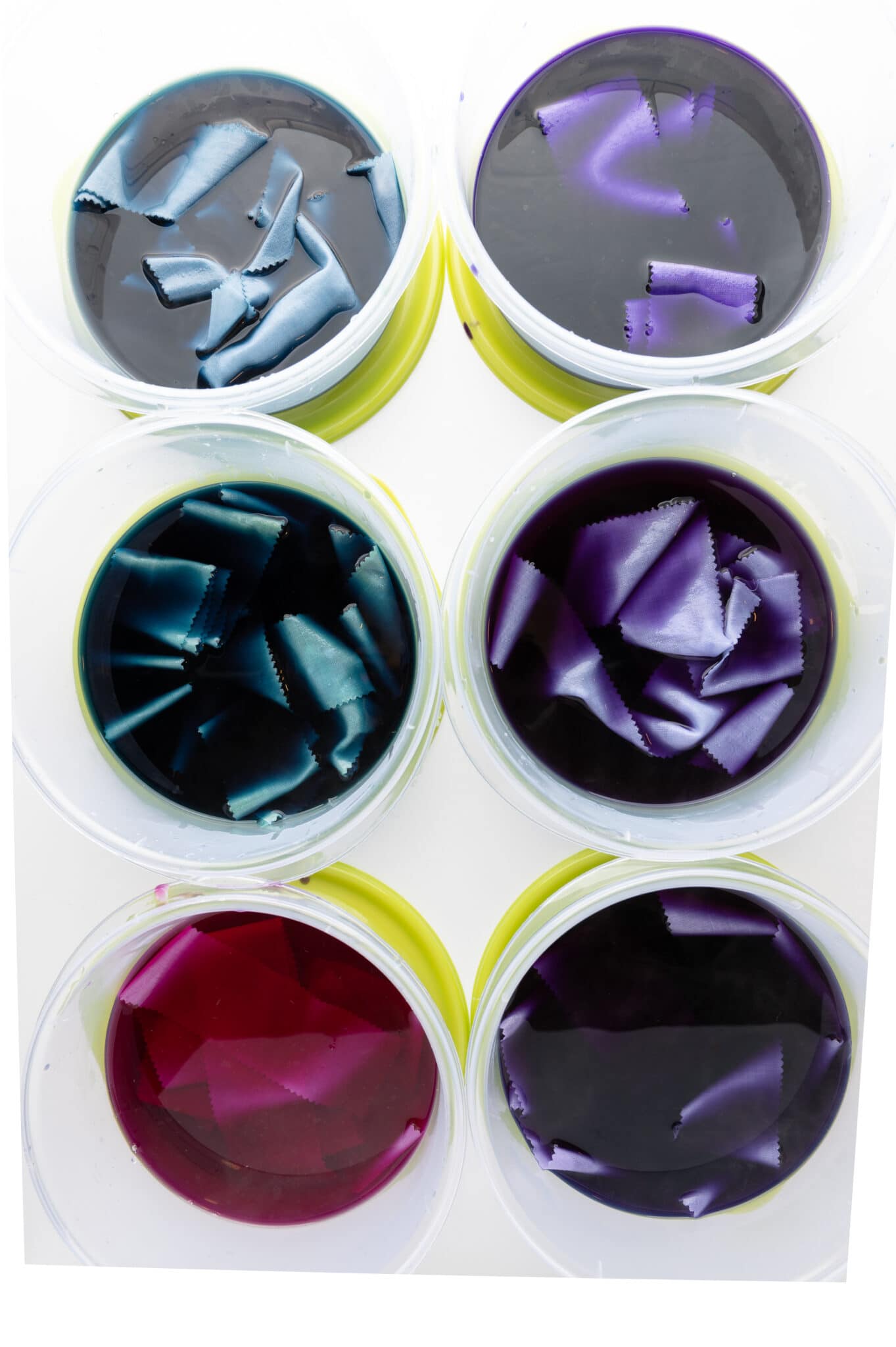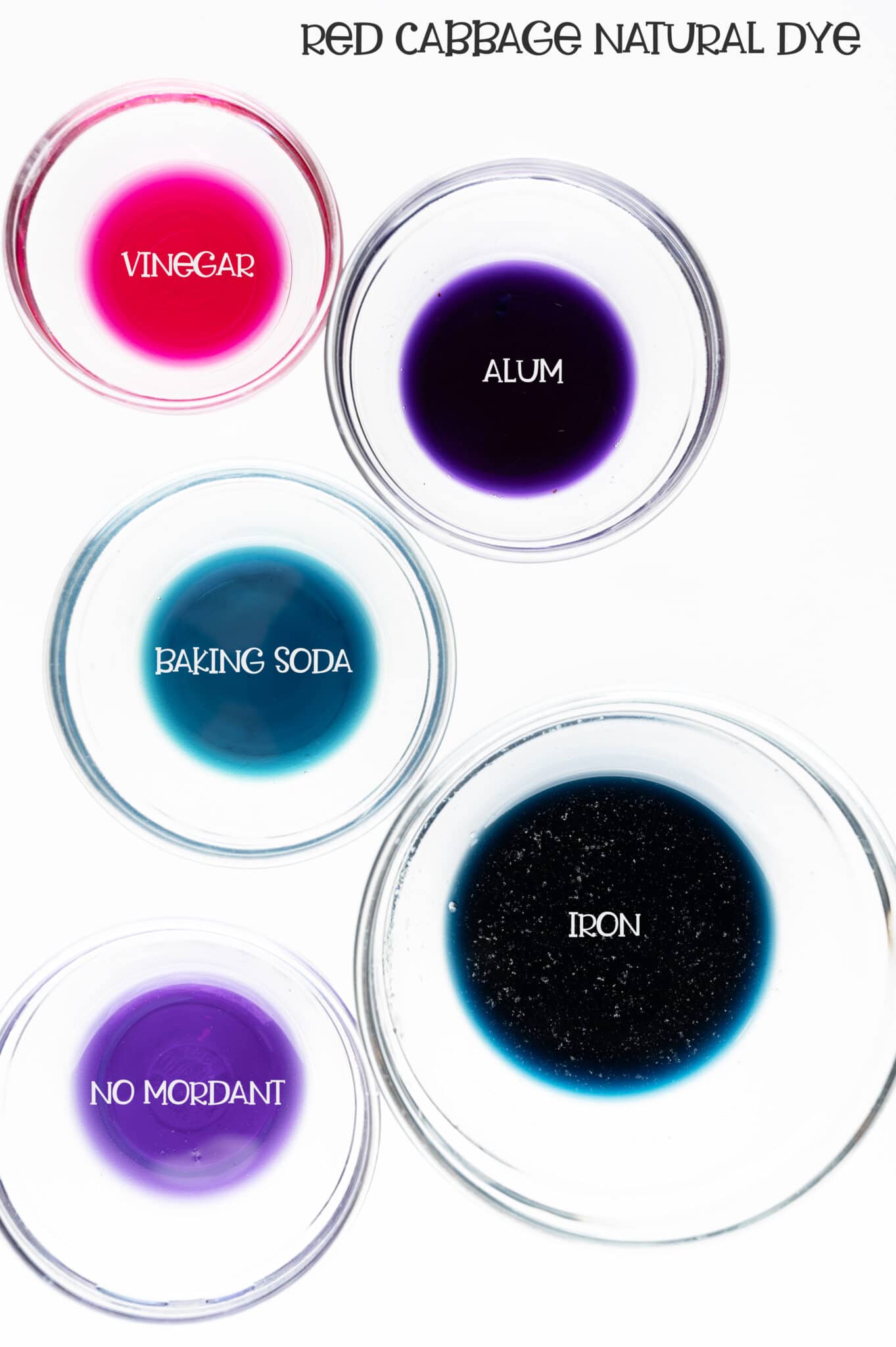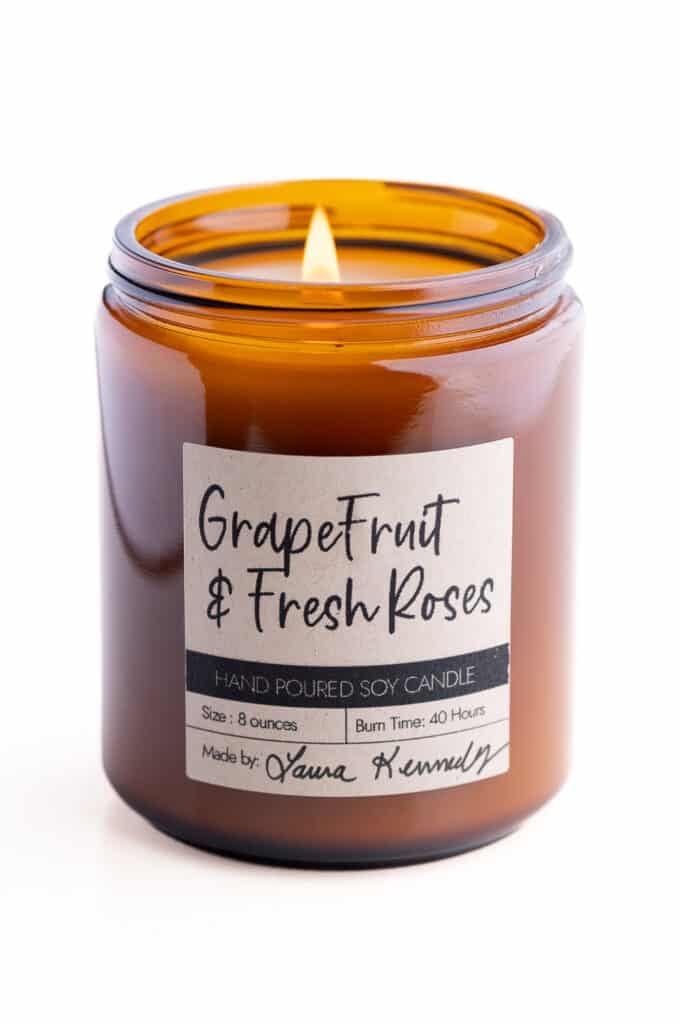Mordants for Natural Dyes – What You Need to Know
If you want to start using a more natural fabric dye for some of your upcoming projects, you need to learn about mordants for natural dyes – what they are and how to use them for success. Here’s your natural dye mordant 101 lesson!
As someone who is learning more and more each day about dyeing fabrics naturally, I am thrilled by it more and more every day. It’s fascinating and fun – and way easier than I originally thought.

What is A Mordant?
Today, I’m diving into mordants. Before I go into details about how to use them, it’s essential to cover what they are.
To put it in very simple terms, mordants help to bind a dye to fiber. Naturally, dyes and fabrics don’t have a strong affinity with each other – the dye will sit on top of the fiber. As a result, many natural dyes will wash out of the fabrics on which they are used.
However, mordants stick well to both dye and fabric and chemically prepare the fabric to bond with the dye, so using a mordant to prepare the fiber for dyeing helps it to retain the dye’s color and vibrancy.

Using Mordants On Different Fibers and Fabrics
Not all natural dyes require mordants to attain a good final color.
Some natural dyes contain elements (ex: tannins) that allow the dye to bind to fiber without any additional additives (ex: indigo).
In addition, some types of fibers, such as fibers derived from animals (eg: wool and silk) are better for using natural dyes as they bond more easily to plant dyes and require less (or no) mordanting.
I recommend that beginners use these fibers when just starting with natural dyeing.
On the other hand, fibers derived from plants (ex: cotton, hemp, and linen) require pre-mordanting – preparing the fabric with mordants before dyeing – alum and tannin to attain the desired results.
When working with natural and plant dyes, it’s important to know about the dyes you’re working with and the fibers you want to dye to achieve the desired results in your project. Check out these articles to learn more about using natural dyes:

Safety of Mordant Dyes
Many crafters and DIYers often prefer to use natural dyes because they are better for the environment. That’s true; however, the mordants required for dyeing can be toxic. Some are more toxic than others, so read below to find out which will work best for your project.
Many mordants are dissolved metal oxides, such as chrome and tin. These mordants are toxic and not recommended for use to protect the health of the dyer.
Most people who use natural dyes prefer to use iron and alum as metal mordants because, when used correctly, they’re the safest to work with.
Be sure to wear rubber gloves when using mordants and dyes, both for protection from the chemicals and so you do not dye your hands.
Myths about Mordants
As with just about everything, some common myths surround using mordants. Here are the most common that I know about and whether they hold any truth.
Are you ready for a little myth-busting?
Mordants are Hard to Work With and Not Worth the Trouble
Using mordants takes a little time (usually an extra step). However, the process is not hard once you know the proper steps, and the extra time is well worth the better results.
Using More Mordant Yields Better Results
This myth is false. You will not achieve better color by using more mordant. Instead, you will destroy your fabric because too much mordant will weaken it, causing it to be brittle.
Vinegar is a Mordant
This one is very common, but it’s false. Vinegar doesn’t bind to the fabric as mordants do.
Certain dyes and fibers work best in an acidic environment. Vinegar, like acetic acid, is a pH modifier used to help open up certain fibers and prepare them for mordanting and dyeing.
This myth probably stems from the fact that vinegar can help “fix” or set the dye once your fiber has already been dyed, but it’s not a mordant in the truest sense.
Additionally, natural dyers will use vinegar and ammonia to change the color of pH-reactive dyes. Acid makes some dyes pinker, while alkali makes them bluer.
Mordants for Natural Dyes
To know which mordants to use, it’s essential to know how each one works because they all behave a little differently with your dyes and fabrics.
Alum (Aluminum Potassium Sulfate/Potassium Aluminum Sulfate )
Alum is probably the most commonly used mordant since it’s easy to find, easy to use, inexpensive, and less toxic than other options. Plus, it improves the wash-fastness of natural dyes, doesn’t change the basic color of your fabric, and keeps dye colors clear. In our testing, we’ve preferred alum mordant over the rest simply because of the added intensity of the dye.
It doesn’t take much alum to get the job done.
All you need to do is dissolve it in plenty of hot water, add it to your pot or whatever you are using, add your fiber, and let it do its thing.
I’ve found that alum greatly intensifies the colors in dyed material. Alum has also made colors much more resistant to sunlight fading. You can see the intensity of the alum in our batch of cabbage dye. The top right image has the alum.
You can also use aluminum acetate on cellulose (plant-based) fibers with similar results to the alum mordant. Aluminum acetate is made from sodium acetate.

Iron (Ferrous Sulfate/ Ferrous Sulphate)
Iron makes your colors darker and grayer. For this reason, many dyers use it with indigo or walnut to get a black color.
While you can pre-mordant with iron as normal, most people use it after dyeing to modify or darken the color.
You can use iron powder from vitamins. It works incredibly well! You don’t need a lot, either. A small sprinkle into your dye bath will intensify your dying results.
I love using this iron mordant with natural blue dyes. I created a dark navy blue dye by adding iron to natural cabbage dye, which turned out quite bold with cotton fabric.
The image below shows the dark navy blue on the far right, made with cabbage dye and iron. The middle blue is from baking soda and cabbage dye, and the dark pink is from cabbage dye and vinegar.

Copper (Copper Sulfate)
Copper imbues a great color, adding a light aqua or green color. Dyers sometimes use it with yellows to achieve a soft green or make greens and blues more turquoise-like.
Tannins
Tara powder is the most common source of tannins. It’s used mostly with plant-based fibers to work in addition to mordants to help bond the dye to the fiber. You can use them either during your regular mordant bath or as a separate step, and tannins can darken your fabric.
Cream of Tartar
Cream of tartar will soften the water and act as a pH buffer to improve results. It works best with animal-based fibers and can soften wool fibers and brighten shades of colors.
Final Thoughts on Mordants for Natural Dyes
Using natural dyes to color your fabrics is a fun and rewarding experience that produces unique results thanks to natural dye variances, natural fiber variances, and mordants.
If you’re brand new to natural dyeing techniques, I recommend learning a little more about natural dyes before jumping into an unfamiliar chemical process.
However, once you try it, I’m sure you’ll love the process – and the results.
Looking for More DIY and Craft Ideas?
Check out these garden-inspired crafts!

Author: Laura Kennedy
Writer & Owner of Little Yellow Wheelbarrow
Laura is a highly skilled gardener and fervent flower enthusiast. Despite her playful battle with plant spacing guidelines, Laura’s work inspires gardeners to create thriving, beautiful spaces that reflect both creativity and sustainability.
Editor’s Note: This post was first published on October 30, 2020, and was updated on January 7th, 2023, for clarity and additional information.










